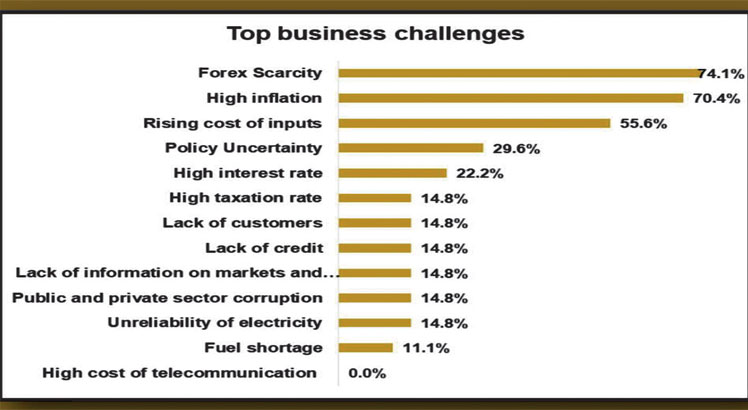Firms’ production capacity declines
Malawi Confederation of Chambers of Commerce and Industry (MCCCI) says businesses are still failing to fully utilise their installed productive capacity largely due to continued foreign exchange scarcity, high inflation and rising costs of inputs.
In its Business Climate Survey for the first half of this year, MCCCI said this led to most businesses producing below their capacity.
During the survey, 51.9 percent of the firms reported a capacity utilisation of below 50 percent, with 37 percent reporting a utilisation rate of higher than 50 percent, but lower than 75 percent, which is the recommended industry threshold.

Only 11.1 percent, according to the survey, reported utilisation rate of above 75 percent.
The survey tasked the firms to rate the current business environment by comparing it to the previous year, with 63 percent indicating that the climate was negative.
On the other hand, 22 percent of the firms observed that the environment was unchanged, while 15 percent indicated that the environment was positive.
Reads the MCCCI report in part: “Declining gross official reserves translates into reduced access to foreign exchange for importing raw materials and machinery, potential delays in procurement, price volatility and broader inflationary pressures.
“The persistence of non-food inflation and high borrowing costs [given the 26 percent policy rate] means that access to affordable capital remains constrained, limiting production expansion.”
During the review period, RBM data shows that starting at $570.6 million (about K1 trillion) in January 2025, the foreign exchange reserves declined to $521 million (about K893 billion) by May 2025, reflecting an overall drop of 8.7 percent within five months.
During this period, the import cover also declined from 2.3 months in January to 1.9 months by May.
Likewise, headline inflation rate declined from 28.5 percent in January to 27.1 percent in June, an indication of easing pressure on consumers’ purchasing power, particularly for essential goods. Inflation rate is currently at 28.7 percent as of September, according to the National Statistical Office.
MCCCI said the relatively persistent non-food inflation indicates that the cost of transport, housing and services remains elevated, maintaining pressure on overall living costs.
“Policymakers should continue to support supply-side interventions to reduce structural inflation drivers, such as improving agricultural productivity and reducing logistics costs, while gradually creating conditions for monetary easing to stimulate investment and consumption,” reads the report in part.
Minister of Industrialisation, Business, Tourism and Trade George Partridge, in an interview on Monday, agreed that capacity utilisation has been on the downward trajectory for some time and this was not surprising because the business environment has been unsatisfactory.
He said: “What is important is that we prioritise those things that we can do immediately, and implement them with speed and have a timetable for those that are medium-term and long-term.
“Creating a conducive environment for business to thrive is a collaborative approach. We are working tirelessly to make sure that the existing businesses reach their full productive potential. If that happens, availability of products will also in turn reduce inflationary pressures.”
Meanwhile, Ministry of Finance, Economic Planning and Development has revised downward Malawi’s projected real gross domestic product growth rate for 2025 from the earlier estimate of four percent to 2.8 percent due to weaker-than-expected performance in key sectors.





